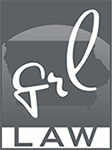Equal rights and responsibilities.
In a cycling enthusiastic state featuring events like RAGBRAI, the oldest, largest and longest recreational bicycle touring event in the world, bike vs. car accidents are unfortunately all too frequent in Iowa. While Iowa specific statitstics were not readily available, according to an April, 2014 report by the U.S. Department of Transportation, National Highway Traffic Safety Administration, 726 cyclists were killed nationally in 2012 and an additional 49,000 were injured in motor vehicle traffic crashes. 69% of those fatalities occurred in urban locations compared to the 31% in rural areas with 60% occurring at non-intersection roadways.
Many motorists get annoyed with cyclists who use the roadways, complaining that cyclists cause traffic congestion and should limit their activities to the designated bike trails. Cyclist's often fire back in this debate claiming to have every right to use the roads as they deem fit. In response, “buzzing,” screeching tires, and aggressively passing cyclists on the road while spewing profanities in their direction is not unusual conduct on the part of some motorists that see a cyclist on the road. Unfortunately, there are also a number of motorists that do not maintain a proper lookout for cyclists on roadways and fail to see them all together. At times, those encounters can and do end with tragic consequences.
This all begs the question, what are cyclist’s rights and what are the duties of a motorist as they relate to a cyclists on a roadway. The answer may surprise cyclists and motorists alike. The answer – equal rights and responsibilities.
According to Iowa Code section 321.234 a person riding a bicycle (or a horse) on a highway has the same legal rights and duties as a driver of a motor vehicle while on the highway. Cyclists have every right to access and use highways throughout the state in the same manner as motor vehicles, unless minimum speed or horsepower prohibitions exist for that particular road (most often interstate systems or fully controlled access facilities). To pass a cyclist riding on a road, a motorist must ensure that the pass can be made safely. This means that the motorist is responsible for ensuring that the roadway ahead is clearly visible and free of oncoming traffic for a sufficient distance to permit the passing to be completely made without interfering with the safe operation of a vehicle approaching from the opposite direction or with the cyclist being overtaken. (Iowa Code 321.303). A motorists who injures a cyclist by failing to comply with these requirements will be considered “negligent” and liable for any damages to the cyclists that result from that conduct.
Additionally, Iowa law also provides for additional protections to cyclists who operate their bicycles upon a highway, roadway or shoulder of a road. Iowa Code section 321.281 makes it a criminal offense for a person operating a motor vehicle to “steer the motor vehicle unreasonably close to or toward a person riding a bicycle on a highway, including the roadway or the shoulder adjacent to the roadway.” It further makes it a crime for any person to “knowingly project any object or substance at or against a person riding a bicycle on a highway.”
Now, all of that all being said, cyclists have equal rights to use of the roadways but correspondingly, they also have equal responsibilities. This means, when riding a bicycle on a roadway, cyclists are also required to comply with the rules of the road. Stops signs must be stopped at. Turn signals must be used when other traffic would be affected. Right-of-ways at intersections apply equally to the pedal biking population. Bottom line, if a cyclist wishes to ride a bike on a roadway, they must also obey the rules of the road the same way motorists must. If they are hurt or injured because they failed to comply with a rule of the road, it is their fault. Additionally, a cyclist may also be held liable for any injuries to persons or property caused by their failure to follow the rules of the road.
To sum it all up, equal rights and responsibilities goes both ways. As with anything, the best approach is for for both sides to be courteous, understanding and aware of what is going on around them. Nobody wants to be on the wrong end of an accident or lawsuit. Equal rights and responsibilities requires us all to be aware and care!

